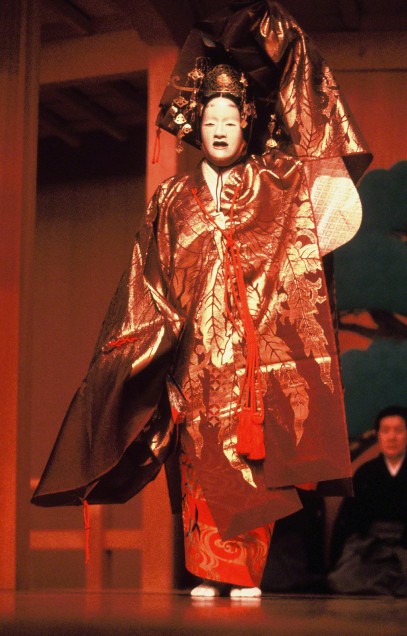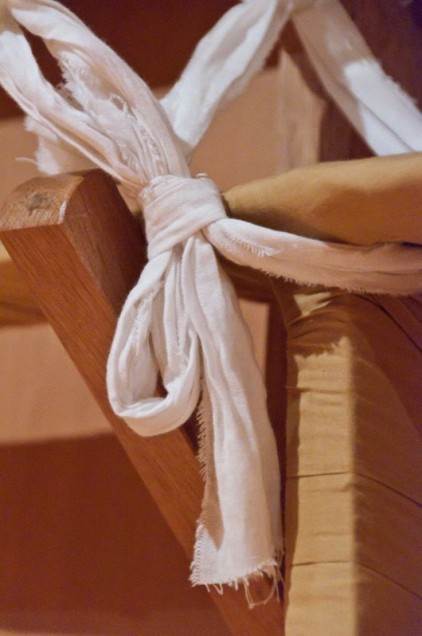Ezra Pound as Noh Student

Hagoromo. “It is as if the whole dance lives in the sleeves of the feather robe, performing the way of the Palace of the Moon.” Photograph (c) Toshiro Morita. Provided by http://www.the-noh.com.
The first chapter uses the famous play, Hagoromo (The Feather Mantle), to explore noh dramaturgy and performance technique. Pound received a version of Hagoromo along with other draft translations of noh plays by Ernest Fenollosa and Hirata Kiichi, and it had a surprising impact on his theories of imagism and The Pisan Cantos.
The noh stage
The stage is constructed of polished Japanese cypress to form a square with pillars (hashira) at the four corners. A bridgeway or hashigakari extends approximately eight meters from stage right and is flanked by three pine trees of decreasing size to create an impression of distance. The only scenery for noh plays are stage properties called tsukurimono, literally built things, like this pine or the bare frame of a boat, usually made of bamboo wrapped in white cloth with little effort to make it look like a real thing. A large pine tree called the oi-matsu is painted on the back wall of the theater.

A tsukurimono or “built thing”: the frame of a boat bound to the wall. Photograph by David Surtasky.

